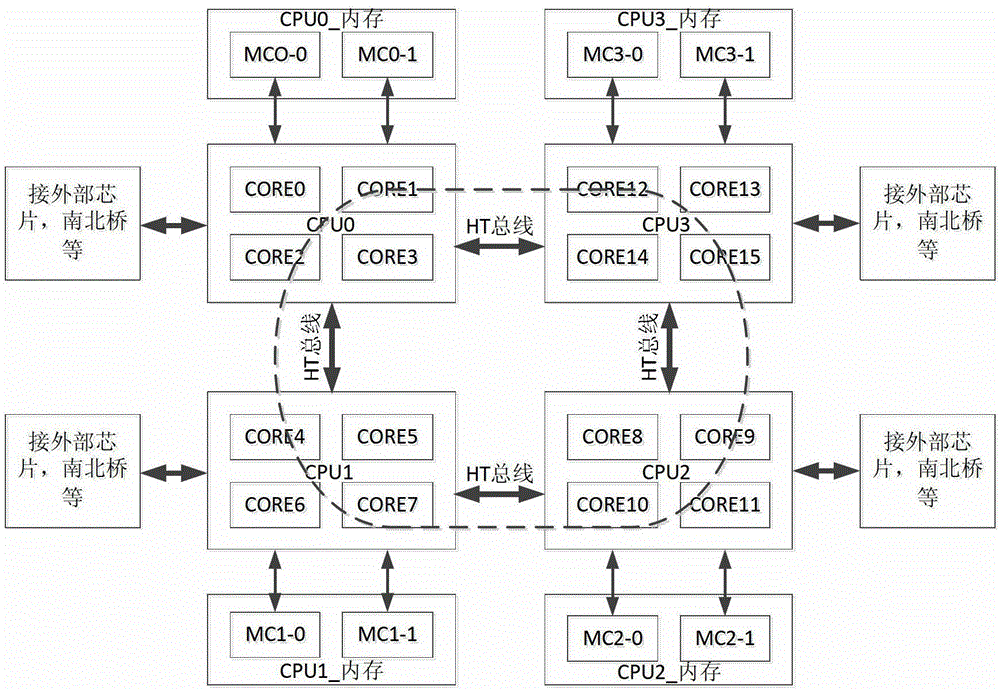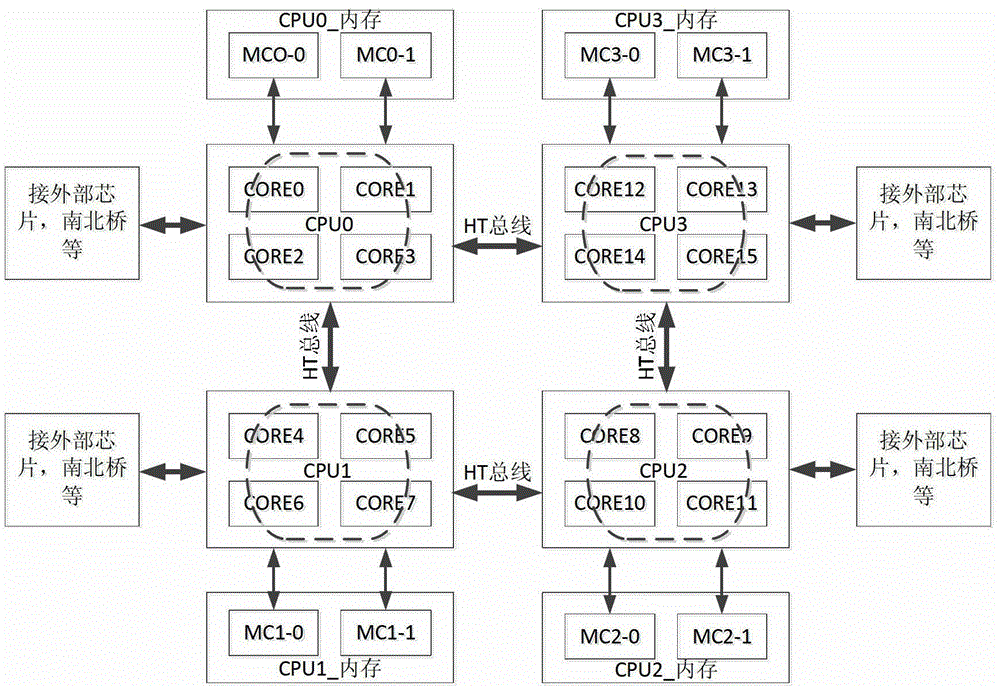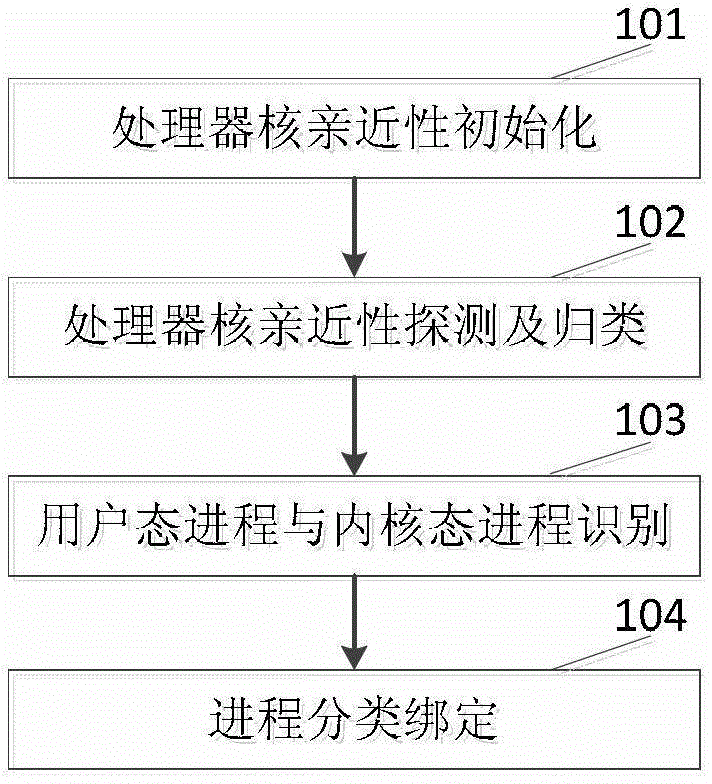Adaptive progress classification binding method for non uniform memory access (NUMA) system architecture
An architecture and self-adaptive technology, applied in the direction of resource allocation, multi-programming devices, etc., can solve the problems of system stability and security reduction, system operating efficiency, and failure to fully consider the impact of system performance, etc., to improve Stability and safety, and efficiency-enhancing effects
- Summary
- Abstract
- Description
- Claims
- Application Information
AI Technical Summary
Problems solved by technology
Method used
Image
Examples
Embodiment Construction
[0037] In order to make the object, technical solution and advantages of the present invention more clearly, the present invention will be further described in detail below in conjunction with the accompanying drawings and specific embodiments.
[0038] The main idea of the present invention is to obtain the distribution of processor cores in the system through the communication delay or memory access delay of the process, and then classify the affinity of the processor cores. Through the affinity classification of processor cores and the identification of user-level processes and kernel-level processes, they are respectively limited to the set of processor cores with the same affinity, thereby avoiding the occurrence of remote memory access and realizing user-level processes. Processes and kernel-level processes are isolated on physical resources, thereby improving system performance and stability.
[0039] See figure 1 , figure 2 , image 3 and Figure 4 , a kind of N...
PUM
 Login to View More
Login to View More Abstract
Description
Claims
Application Information
 Login to View More
Login to View More - R&D
- Intellectual Property
- Life Sciences
- Materials
- Tech Scout
- Unparalleled Data Quality
- Higher Quality Content
- 60% Fewer Hallucinations
Browse by: Latest US Patents, China's latest patents, Technical Efficacy Thesaurus, Application Domain, Technology Topic, Popular Technical Reports.
© 2025 PatSnap. All rights reserved.Legal|Privacy policy|Modern Slavery Act Transparency Statement|Sitemap|About US| Contact US: help@patsnap.com



